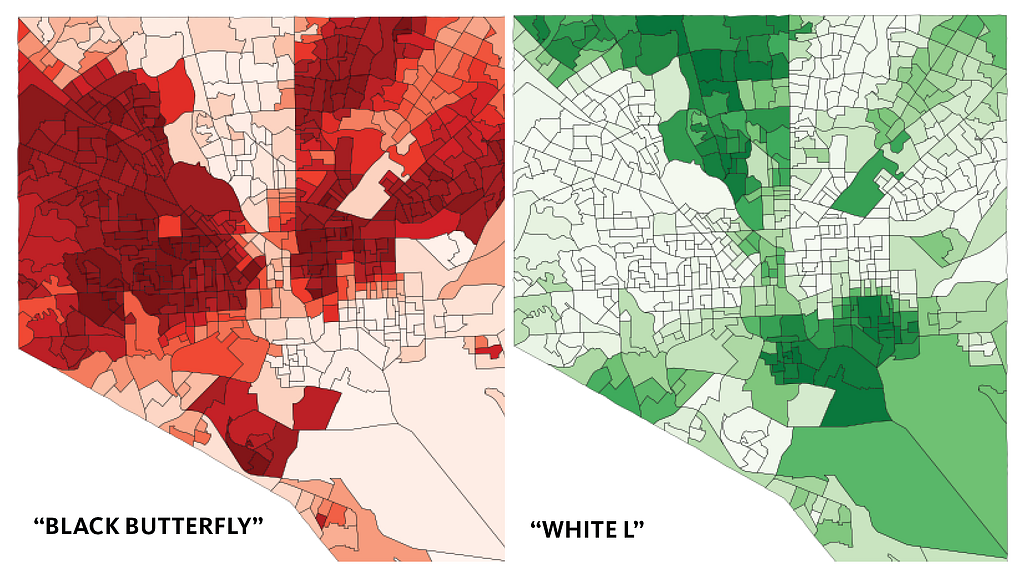Aligning Practice With Climate Justice
What We Did
There are systemic inequities in cities across the United States that result in disproportionate levels of impact to under-served communities — typically leading to higher levels of homelessness, poverty, and crime. These inequities are exacerbated by external forces such as climate change. Our research seeks to identify current inequities within our cities — our specific reference now is Baltimore City. The aim is to apply practical interventions in the design and architecture processes to help mitigate the negative impact that climate change has on exacerbating these disparities. The findings of this research empower designers, architects, and strategists to become advocates and leaders in climate justice action through community engagement, collaborative partnerships, and thoughtful integration of knowledge within the design process.
In the image shown above, the ‘White L’ and the ‘Black Butterfly,’ named by designer Lawrence Brown for their cartographic shapes, compare the impact of climate change on non-white and white communities in Baltimore.
Learn More
Team
Ursula Fernandez del Castillo, Emily Ryan, Elaine Asal, Keith Hack, Hannah Brokos, Hilary Zoretic, Amanda Strawitch, Ariadna Hernandez
Year Completed
2024
Comments or ideas for further questions we should investigate?
